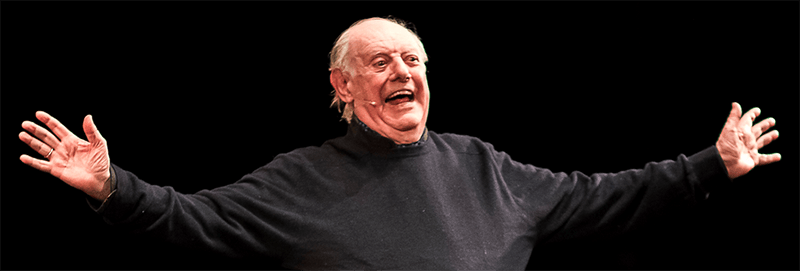
Other notable postwar novelists are Dino Buzzati, Elsa Morante, Natalia Ginzburg, Primo Levi, and Italo Calvino. Buzzati’s allegorical writings, which owe a debt to Austrian writer Franz Kafka, include the novel Il deserto dei Tartari (1940; The Tartar Steppe, 1952), his most highly regarded work, and the play Un caso clinico (A Clinical Case, 1953). The Tartar Steppe is a surreal tale of life at a frontier military post, where a soldier waits for something to happen. The fiction of Elsa Morante has an epic, mythic quality-as in Menzogna e sortilegio (1948; House of Liars, 1951), the saga of a southern Italian family, and La storia (1974; History, 1977). The latter, which enjoyed great popularity and critical success during the 1970s, is about a half-Jewish schoolteacher living in Rome during World War II.
Natalia Ginzburg, a poet and novelist, won renown for her sensitive, spare treatment of modern Italian children and women, isolated within the family setting, in such works as Le voci della sera (1961; Voices in the Evening, 1963) and Lessico famigliare (1963; Family Sayings, 1967). Ginzburg also wrote of everyday life amid the devastating events of the war in Tutti i nostri ieri (1952; originally translated as Dead Yesterdays, 1956, and later as All Our Yesterdays, 1985). The latter comprises memoirs of her early life in Turin. Primo Levi, trained as a chemist, devoted himself to writing in 1977. His works include memoirs of his imprisonment in the concentration camp at Auschwitz during World War II, such as Se questo è un uomo (1947, originally translated as If This Is a Man, 1959, and later as Survival at Auschwitz, 1961). A collection of his short stories was published in English translation as Moments of Reprieve (1985). Levi’s Il sistema periodico (1984; The Periodic Table, 1984) consists of autobiographical essays using chemistry as a metaphor for life.
Italo Calvino, another postwar novelist widely read in England, began as a realist but later turned to fantasy and fable to present his version of modern life. Calvino is noted for creating imaginary worlds of great beauty in novels such as Il barone rampante (1957; The Baron in the Trees, 1959) and Le città invisibili (1972; Invisible Cities, 1974). Other Calvino fiction, such as Le cosmicomiche (1965; Cosmicomics, 1968) and Se una notte d’inverno un viaggiatore (1979; If on a Winter’s Night a Traveler, 1981), examines the processes of writing and reading. The theme of his last novel, Palomar (1983; Mr. Palomar, 1985), suggests that any attempt to comprehend the human situation is completely fruitless. Leonardo Sciascia wrote about the problems of his native Sicily in novels, short stories, plays, and essays. He wrote a modern version of Candide, by French satirist Voltaire, titled Candido, ovvero un sogno fatto in Sicilia (1977; Candido, or a Dream Dreamed in Sicily, 1979). This pessimistic novel involves a Sicilian orphan who is an outcast from the world. Sciascia’s short stories, published in translation as The Wine-Dark Sea (1985), provide a glimpse of Sicily’s history.
Antonio Porta stands out among Italian poets of the late 20th century. Porta, who also wrote fiction, plays, and criticism, sought meaning and identity through the exploration of language, the imagination, and dreams. His poetic works include L’aria della fine (1982; Kisses from Another Dream, 1987) and Invasioni (1984; Invasions and Other Poems, 1986). Milo De Angelis has drawn on classical literature and psychoanalysis in his poetry. A selection of his poems has been published in English as Finite Intuition (1994).
Italy’s best-known playwright of the late 20th century was Dario Fo, who received the Nobel Prize in literature in 1997. Fo builds his antic plays on contemporary politics and popular culture, and he involves spectators in the productions. Among his better-known plays are Mistero buffo (1969; Comic Mysteries, 1988) and Morte accidentale di un anarchico (1970; Accidental Death of an Anarchist, 1980).
Fiction, however, was the most important literary genre in Italy in the late 20th century. The most prominent novelist of the late 20th-century was Umberto Eco, a professor of semiotics at the University of Bologna. Eco gained an international reputation with Il nome della rosa (1980; The Name of the Rose, 1983), a murder mystery set in a medieval monastery. Like Calvino, he unites fantasy with metaphysical speculation. In The Name of the Rose and Il pendolo di Foucault (1988; Foucault’s Pendulum, 1989), Eco used his understanding of semiotics (the study of signs and symbols and their meanings) to deepen the treatment of history and culture in his fiction.
Antonio Tabucchi, a professor of Portuguese literature at the University of Siena, achieved fame through detective thrillers that involve politics and social issues. Sostiene Pereira (1994; Pereira Declares, 1995) takes place in Portugal in 1938 during the dictatorship of António Salazar. A later mystery by Tabucchi, La testa perduta di Damasceno Monteiro (1997; The Missing Head of Damasceno Monteiro, 1999), takes the reader on a tour of contemporary Portugal. Francesca Duranti won several literary prizes with her dreamlike novel La casa sul lago della luna (1984; The House on Moon Lake, 1986) about a translator who discovers a forgotten masterpiece and confuses his own life with that of the author. Paola Capriolo deals with the dangers of art in such novels as Vissi d’amore (1992; Floria Tosca, 1997), a love story alluding to the opera Tosca by Giacomo Puccini, and La spettatrice (1995; The Woman Watching, 1998), about an actor who becomes obsessed with a woman in the audience.
For more Italian books and authors please visit the Italian Bookstore.

